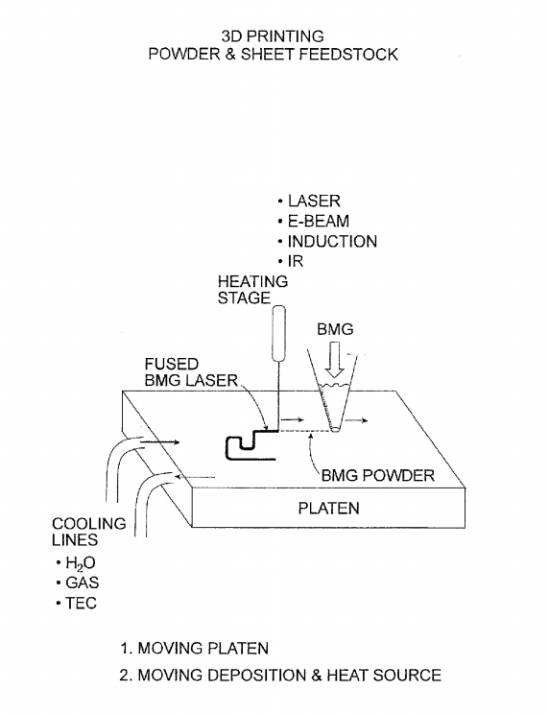Apple May Be Looking to Bite into Additive Manufacturing

Latest News
December 27, 2013
Regardless of how much the experts dither over whether the price of additive manufacturing (AM) stocks are rising above actual value, interest remains strong in companies such as Stratasys and 3D Systems. This, along with adoption of the technology by companies like GE and Ford, continues to show the continuing growth of AM, and that growth is bound to draw the attention of other entities in the business world.
In October, we reported on HP’s announcement that it intends to produce at least one 3D printer in 2014. That decision seems a natural fit and ends long-time speculation that HP was eyeing AM as a new business opportunity. More unusual is a series of recent patent filings by Apple that seems to indicate the electronics juggernaut is also interested in AM.

Apple filed for five new patents at the end of November, related to Liquidmetal, an alloy with a number of characteristics that might make it extremely useful for producing electronic goods. Two of the patents dealt directly with how AM might be used to build parts using Liquidmetal, including plans for the production of bulk metallic glass (BMG).
While no one outside of Apple can really be certain what the company’s interest in BMG might be, it seems logical to assume it is looking for easier ways to produce some of the primary components of its popular mobile device lines, such as the iPad or iPhone. This is what Apple has to say about the potential of AM for electronic devices.
One application of 3D printing is production of parts such as enclosures for consumer electronics. Parts for consumer electronics may have small sizes, tight constraints on their dimensions and complex shapes, which can make traditional subtractive manufacturing method difficult or expensive.
Now, in late December, Apple has filed another patent related to AM, this time to do with inkjet printing. From a quick reading of the patent, it looks as though Apple is working on a method to use inkjet 3D printing on objects in three dimensions, rather than actually building new objects. In essence, the AM system could easily be used to build up a casing around other parts, or add flourishes to an existing product.
It’s entirely possible Apple has no interest in getting into the AM business. These patents could simply represent in-house development ideas meant to augment current product designs. It wouldn’t take much in the way of 3D printing power to offer custom iPhone cases, for example. This might also be part of Apple’s limited reshoring efforts, as it makes almost no sense to ship materials to countries like China just to have objects 3D printed and shipped back.
Below you’ll find a short video about Liquidmetal.
Source: Patently Apple
Subscribe to our FREE magazine, FREE email newsletters or both!
Latest News
About the Author
John NewmanJohn Newman is a Digital Engineering contributor who focuses on 3D printing. Contact him via [email protected] and read his posts on Rapid Ready Technology.
Follow DERelated Topics






